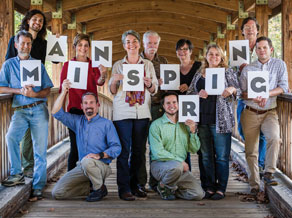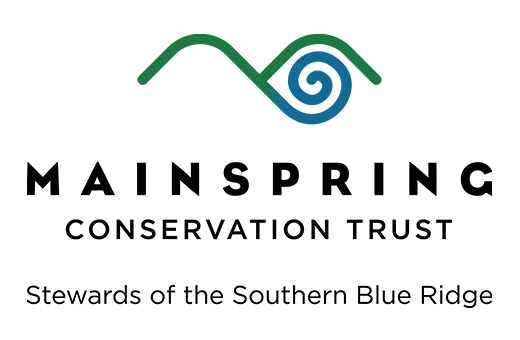From Asheville Citizen-Times November 3, 2015
Written by Karen Chávez
 FRANKLIN – Quick: Where is the Land Trust for the Little Tennessee located?
FRANKLIN – Quick: Where is the Land Trust for the Little Tennessee located?
Don’t bother scratching your head to come up with a city in Tennessee. The 18-year-old land conservation organization actually is located in the town of Franklin, North Carolina. That slightly confusing fact has led the board of directors over the past few years to work on changing the land trust’s name to better describe its location and its mission.
As of Jan. 1, the land trust will be known as Mainspring Conservation Trust.
The new name is the result of a multiyear process and was formally adopted by the board at its June 2015 retreat.
“It’s very exciting, but it’s a little bit frightening. It really is difficult to change the name of LTLT, but it’s time. We recognize that our mission is broader than the Little Tennessee,” said Sharon Taylor, who became executive director of the land trust in January.
The organization for years has called itself the keystone conservation organization in this area, she said.
“If you look at the definition of mainspring, it’s a synonym for keystone, which is the motivating force for an activity or a cause. So we feel like we are the motivating force for conservation in the Southern Blue Ridge,” she said.
Originally founded as the Nikwasi Land Trust in 1997, after the famous Nikwasi Cherokee mount in Franklin, the organization became the Land Trust for the Little Tennessee in 1999. In the years since, it has expanded its project area beyond the Little Tennessee River watershed into the Tuckasegee and Hiwassee watersheds. It now works in Cherokee, Clay, Graham, Jackson, Macon and Swain counties in North Carolina, and in the northern portion of Rabun County, Georgia.
The organization’s work also has broadened beyond traditional land trust projects to include sustainable forest management and land and water restoration. When it merged with the Little Tennessee Watershed Association in 2012, its work expanded further to include programs related to water, education and research.
“It gives me hope to see the organization strengthening as a regional conservation leader,” said founding director Paul Carlson. “Part of that is embracing a new name that is as relevant in the valleys of the Tuckasegee and Hiwassee as in the Little Tennessee.”
The land trust has helped to preserve just under 25,000 acres in Western North Carolina in the past 18 years. The group’s flagship project is conservation of the Needmore Tract, complete in 2004 with about 4,400 acres in Swain and Macon counties. The Tract encompasses 26 miles of Little Tennessee River frontage and 37 miles of tributary streams to the river and serves as the keystone to the forested corridor connecting the Nantahala and Cowee mountain ranges.
It is managed by the N.C. Wildlife Resources Commission primarily for hunting and fishing.
Taylor said the land trust has worked to add more land to the Needmore Game Lands, which now include some 4,800 acres, and is working to provide better public access off Highway 28, popular with hikers, kayakers and other forest recreation users. She said the group hopes to soon hold guided hikes on the property.
For more information or to view a short video about the new name, visit www.ltlt.org.

